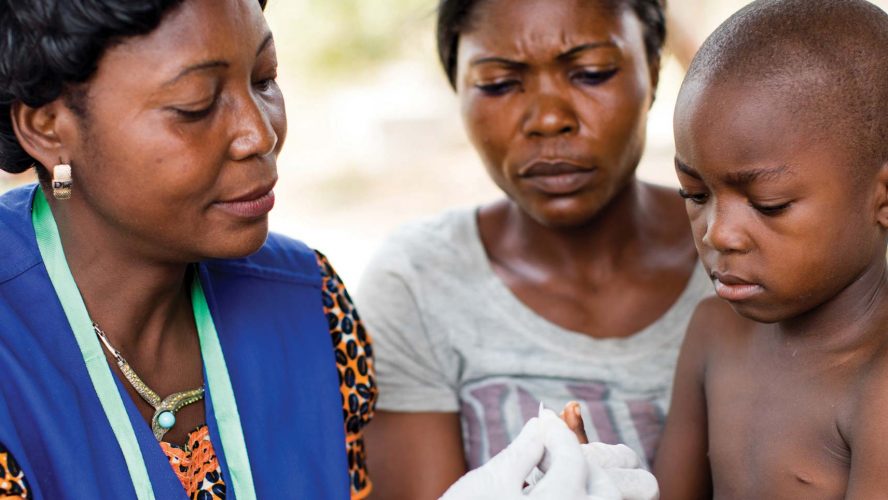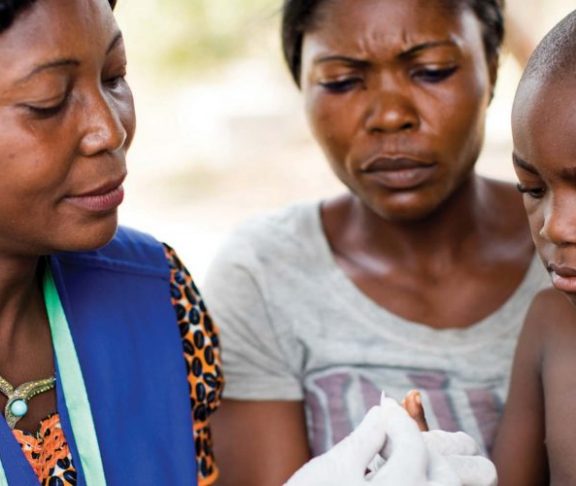
Kelly Sibisibi
Regional Analyst, E8 Secretariat

Kudzai Makomva
Director, E8 Secretariat

Phelele Fakudze
Policy and Advocacy Manager, E8 Secretariat
As countries across the world intensify efforts to stop the spread of malaria, collaboration across national borders has never been more important. In 2009, eight countries in southern Africa (Angola, Botswana, Mozambique, Namibia, South Africa, Swaziland, Zambia, and Zimbabwe) committed to work together on a set of regional strategies that will complement the individual efforts of each country to achieve elimination.
For a country to successfully eliminate malaria – and then prevent reintroduction of the disease – cases coming from neighboring countries must be detected, tracked, and treated immediately to prevent ongoing local transmission of parasites. That is a difficult task in southern Africa, where malaria is endemic and national borders are very porous. Infections are even harder to track and treat in regions where many people are considered mobile or migrant or live in rural, hard-to-reach areas.
The nature of the borders in Southern Africa will make this a very difficult task.
The aim is to stop cross-border malaria transmission by facilitating collaboration among health ministers, national malaria programs, and partners across southern Africa. This regional initiative uses an unprecedented approach that aims to accelerate elimination in the four low-transmission “frontline countries”—Botswana, Namibia, South Africa, and Swaziland—by 2020 and to pave the way for elimination in the four middle- to high-transmission “second line countries”—Angola, Mozambique, Zambia, and Zimbabwe—by 2030. The ambition is to create a pioneering collaboration, which provides a blueprint for other countries and regions seeking to eliminate malaria. Core objectives of the regional strategy include the promotion of regional coordination, high level advocacy, policy harmonization, prevention of cross-border transmission, and sustainable financing.
Towards elimination by 2030
We are developing national malaria strategies with an aim to control and eliminate malaria. With full view of the direction countries are moving, the initiative complements national malaria elimination efforts to ensure a well-coordinated platform for harmonization of policies, strategies and interventions. This is key to achieving elimination across these southern African countries by 2030.
Member countries developed the Regional Malaria Acceleration Plan in 2017 as a regional roadmap that prioritizes malaria investments to: 1) address interventions gaps in underserved communities that continue to drive transmission; and 2) provide a regional plan to leverage coordination, economies of scale, and collective action. By tackling the sources of malaria transmission and strengthening malaria prevention and surveillance in areas where imported malaria is likely, the Acceleration Plan sets the course for achieving the region’s elimination targets.
Border posts are improving lives
In an attempt to reduce the importation of malaria across national borders, we have established 46 malaria border posts (consisting of 33 border clinics and 13 mobile surveillance units). These are providing better access to malaria testing and treatment for migrant and mobile populations, as well as other underserved residents living in remote communities along the borders. The posts are improving countries’ ability to identify infections, providing access to care and tracking areas of increased transmission.
In response to multi-country outbreaks in the region during the 2016/2017 transmission season, we are also enhancing epidemic preparedness and response (EPR) capacity at both the country and regional levels, and have established an EPR situation room to serve as a hub for monitoring regional epidemics as they occur, and launching a coordinated response. The situation room provides tailored support to national programs in monitoring regional trends, troubleshooting response bottlenecks, and facilitating the incorporation of climate forecasting data.

